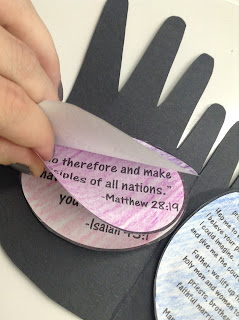This Sunday we celebrate the glory and the mystery of the Most Holy Trinity.
A few weeks ago as I was teaching about the Sacrament of Marriage, I realized that I was missing something. We had read the chapter in our textbook, had completed a good class discussion and filled in these notes, but they needed more. With the current attack on marriage in pop culture, media, and politics, my 5th graders needed more depth to explain the meaning of marriage.
As I planned the lesson, I thought about some of the things that I have taught and explained to students I have had in Youth Group over the years. I thought about how I could bring more of this lesson into a 5th grade classroom. I thought about my emphasis with the kids this year that they are all called to a Vocation, and those vocations are about love (the real kind) and service.
And then I had a duh! moment. While trying to bring the lofty topics of vocation and marriage down to their level, I had unintentionally watered it down a bit. I didn't want to make it too confrontational, or introduce them to mis-truths about these Sacraments. And it hit me that I could use a simple but profound model that I have used with both teens and adults- it would work with ten-year-olds, too.
"We love because He first loved us." ~1 John 4:19
A love is modeled after the Trinity. The complete gift of self between the Father and the Son yields the Holy Spirit. This union is founded on love- true communion- and we are made in the image and likeness of this model. That means that our Vocations are called to be life giving unions that bear fruit and are created by self-sacrificing love.
Incredibly theological? Yes. A mystery that can't fully be understood this side of heaven? Yes.
But something that can't be shared with children? I think not. CCC 237
So I decided to try a new activity and see how they responded, if it helped them understand the Sacraments of Matrimony and Holy Orders, as well as the call to be a Religious Sister. CCC 260
- We started with each student taking four blank triangles. I asked them to name the Three Persons of the Blessed Trinity. We wrote their names in each corner of one triangle. I then asked them how the Trinity was united and we were able to summarize it as a communion of love. We drew a heart in the center and drew the arrows between each person. I told them that it was a great mystery, but that the love between the Father and the Son is so strong and so real that it actually revealed by a third Person, the Holy Spirit. CCC 243-248
- I then asked if they could represent the Sacrament of Matrimony on the next triangle. They wrote husband and wife in two of the corners. I then asked them to draw a heart in the center and arrows between the couple. I asked what would be revealed if the couple shared self sacrificial love, and they said "children!" We wrote that down, but also talked about how some couples are unable to have children, so together they are able to become spiritual fathers and mothers and share their gifts with the Church. CCC 1601-1620
- Next up was the Priesthood. We wrote down the priest, and following the model of marriage, the kids figured out that the other corner would be the Church, the Bride of Christ. (this is also a great example to talk about why men are called to be priests and not women). I asked what the fruit of this Vocation was, and the kids named things like the gift of the Sacraments, grace, and Spiritual fruit. CCC 1544-1553, 1577-1585
- Finally, we included the vocation of consecrated single life, specifically nuns and sisters. The kids were quickly able to figure out that the sister's Bridegroom is Christ. They mentioned again things like grace and Spiritual fruit as the revelation of this Vocation. CCC 922-933
- We then glued the four triangles onto a notebook page and added the title "All Vocations are Modeled After the Trinity." I also had them add the Fulton Sheen quote "All love tends to become like that which it loves."
It was a great discussion, and a memorable teaching lesson for me. I hope to continually find ways to share great and glorious and mysterious truths in meaningful ways with the students in my classroom.
The students had the freedom to arrange their notebook page however it made sense, so we had some different set ups, like this one:
And this one:
You can get the quote cards by clicking on the image below:
If you don't want to do the cut-and-glue thing, you could also use these printable notes and have the same discussion.
Click here for a blank version of the notes:
And click here for a filled in version of the notes:
What do you think? Do you have any great resources or lessons about sharing the truths of marriage and vocations with kids? I'd love to hear about them!
(originally posted May 25, 2015 here)



































